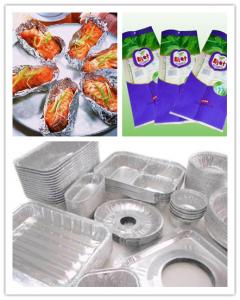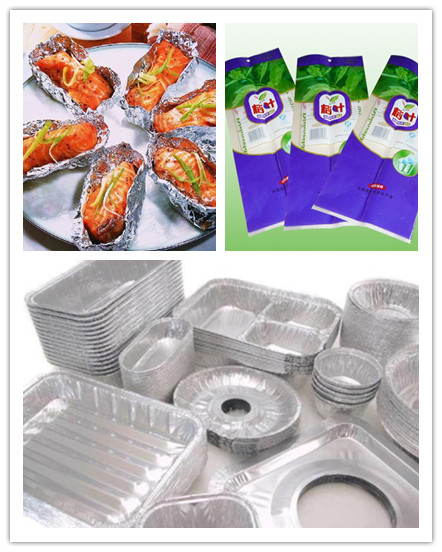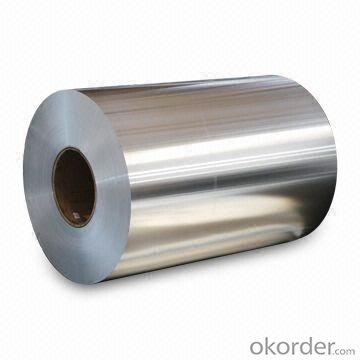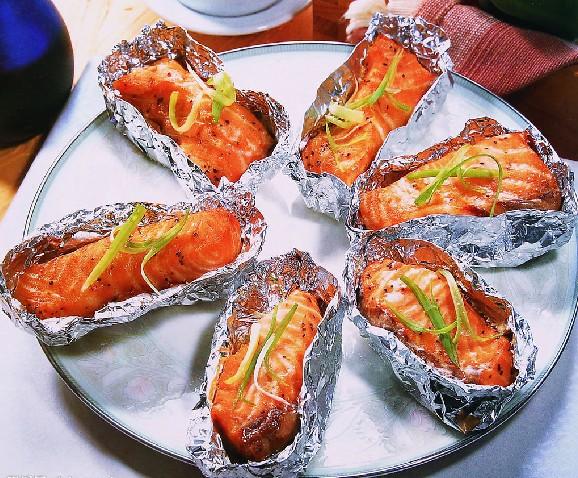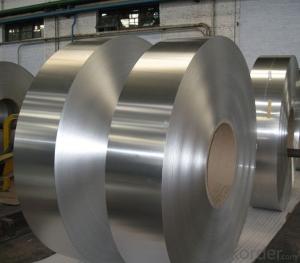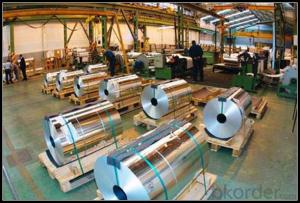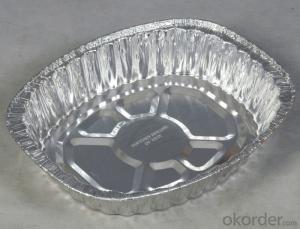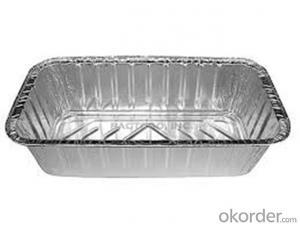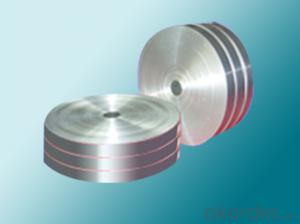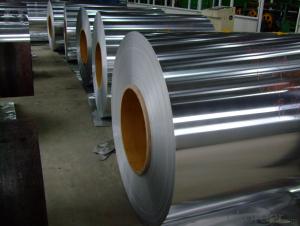2024 Aluminum Coil for Package Dairy Package from China
- Loading Port:
- Shanghai
- Payment Terms:
- TT or LC
- Min Order Qty:
- 5 m.t.
- Supply Capability:
- 9000 m.t./month
OKorder Service Pledge
OKorder Financial Service
You Might Also Like
Aluminium is a relatively soft, durable, lightweight, ductile and malleablemetal with appearance ranging from silvery to dull gray, depending on the surface roughness. It is nonmagnetic and does not easily ignite. A fresh film of aluminium serves as a good reflector (approximately 92%) of visible light and an excellent reflector (as much as 98%) of medium and far infrared radiation. The yield strength of pure aluminium is 7–11 MPa, while aluminium alloys have yield strengths ranging from 200 MPa to 600 MPa. Aluminium has about one-third t,e density and stiffness of steel. It is easily machined, cast, drawn and extruded.
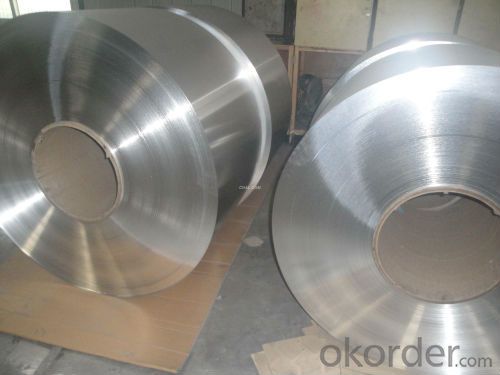
Aluminum Foil
Alloy:1,3,5,8 series
Thickness: 0.006mm—0.20mm
Width: 200mm—1600mm (Can be slitted)
Coating : HSL/Primer
Color : According tocustomers’ requirements

Chemical Compostion :
Alloy | Si | Fe | Cu | Mn | Mg | Cr | Zn | Ti | Other | Al | |
Single | Total | ||||||||||
1050 | 0.25 | 0.4 | 0.05 | 0.05 | 0.05 | _ | 0.05 | 0.03 | 0.03 | _ | 99.5 |
1060 | 0.25 | 0.35 | 0.05 | 0.03 | 0.03 | _ | 0.05 | 0.03 | 0.03 | _ | 99.6 |
1070 | 0.2 | 0.25 | 0.04 | 0.03 | 0.03 | 0.04 | 0.03 | 0.03 | 99.7 | ||
1100 | Si+Fe:0.95 | 0.05~0.40 | 0.05 | _ | _ | 0.1 | _ | 0.05 | 0.15 | 99 | |
1200 | Si+Fe:1.00 | 0.05 | 0.05 | _ | 0.1 | 0.05 | 0.05 | 0.15 | 99 | ||
3003 | 0.6 | 0.7 | 0.05~0.20 | 1.0~1.5 | _ | _ | 0.1 | _ | 0.05 | 0.15 | Remainder |
3004 | 0.3 | 0.7 | 0.25 | 1.0~1.5 | 0.8~1.3 | _ | 0.25 | _ | 0.05 | 0.15 | Remainder |
3005 | 0.6 | 0.7 | 0.3 | 1.0~1.5 | 0.20~0.6 | 0.1 | 0.25 | 0.1 | 0.05 | 0.15 | Remainder |
3105 | 0.6 | 0.7 | 0.3 | 0.30~0.8 | 0.20~0.8 | 0.2 | 0.4 | 0.1 | 0.05 | 0.15 | Remainder |
5005 | 0.3 | 0.7 | 0.2 | 0.2 | 0.50~1.1 | 0.1 | 0.25 | _ | 0.05 | 0.15 | Remainder |
5052 | 0.25 | 0.4 | 0.1 | 0.1 | 2.2~2.8 | 0.15~0.35 | 0.1 | _ | 0.05 | 0.15 | Remainder |
5083 | 0.4 | 0.4 | 0.1 | 0.40~1.0 | 4.0~4.9 | 0.05~0.25 | 0.25 | 0.15 | 0.05 | 0.15 | Remainder |
5086 | 0.4 | 0.5 | 0.1 | 0.20~0.7 | 3.5~4.5 | 0.05~0.25 | 0.25 | 0.15 | 0.05 | 0.15 | Remainder |
6061 | 0.4~0.8 | 0.7 | 0.15~0.40 | 0.15 | 0.80~1.20 | 0.04~0.35 | 0.25 | 0.15 | 0.05 | 0.15 | Remainder |
6063 | 0.2~0.6 | 0.35 | 0.1 | 0.1 | 0.45~0.90 | 0.1 | 0.1 | 0.1 | 0.05 | 0.15 | Remainder |
6082 | 0.7~1.3 | 0.5 | 0.1 | 0.4~1.0 | 0.6~1.2 | 0.25 | 0.2 | 0.1 | 0.05 | 0.15 | Remainder |
8011 | 0.5~0.9 | 0.6~1.0 | 0.1 | 0.2 | 0.05 | 0.05 | 0.1 | 0.08 | 0.05 | 0.15 | Remainder |
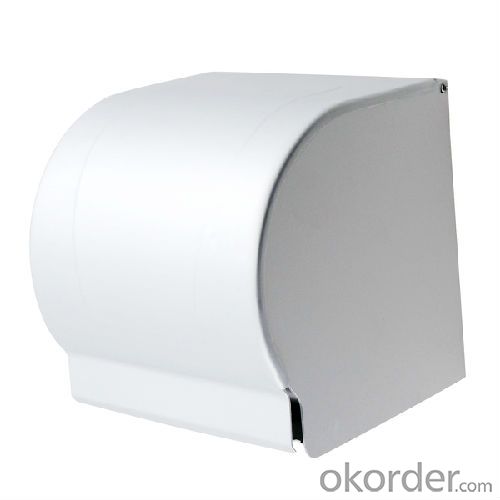
- Q: What are the production processes of aluminum coil and what are the functions of various industrial furnaces in the production of aluminum? The more detailed, the better. Thank you! Points!
- General steps are as follows: melting - hot rolling - cold rolling - annealing – shearing – straightening – punching
- Q: How do aluminum coils compare to other types of coils (e.g., copper)?
- Aluminum coils and copper coils are two common types of coils used in various industries. While both have their own advantages and disadvantages, it is important to understand how they compare to each other. One of the main differences between aluminum and copper coils is their conductivity. Copper is known for its excellent electrical and thermal conductivity, making it a preferred choice for applications that require high levels of heat transfer efficiency. Aluminum, on the other hand, has a lower conductivity compared to copper, but it is still a good conductor of electricity and heat. Another key factor to consider is the cost. Copper is more expensive than aluminum, primarily due to its higher demand and limited availability. Therefore, aluminum coils are often chosen as a cost-effective alternative, especially in applications that do not necessarily require the high conductivity of copper. In terms of weight, aluminum coils are significantly lighter than copper coils. This makes them easier to handle and install, reducing overall transportation and labor costs. The lightweight nature of aluminum coils also makes them suitable for applications where weight is a concern, such as in the automotive and aerospace industries. When it comes to corrosion resistance, copper coils have the upper hand. Copper is highly resistant to corrosion, ensuring longer lifespan and less maintenance. Aluminum, on the other hand, is more prone to corrosion, especially in environments with high humidity or exposure to certain chemicals. However, with proper coatings and treatments, aluminum coils can be protected against corrosion effectively. Durability is another aspect to consider. Copper coils are known for their durability and ability to withstand extreme conditions, making them suitable for applications where longevity is crucial. Aluminum coils, while not as durable as copper, can still provide satisfactory performance in many applications, especially when properly designed and maintained. In summary, aluminum coils and copper coils have their own distinct characteristics and advantages. Copper coils offer superior conductivity, corrosion resistance, and durability, but they come at a higher cost. Aluminum coils, on the other hand, are lighter, more cost-effective, and suitable for various applications. Ultimately, the choice between the two types of coils depends on the specific requirements, budget, and environmental factors of the application at hand.
- Q: Can aluminum coils be used for heat transfer applications?
- Indeed, heat transfer applications can utilize aluminum coils. The commendable thermal conductivity of aluminum renders it remarkably efficient in transferring heat. In multiple heat transfer applications like air conditioning systems, refrigeration units, and heat exchangers, aluminum coils are frequently employed. The lightweight nature of aluminum, coupled with its resistance to corrosion, further contributes to its widespread preference in these applications. Moreover, the malleability of aluminum coils allows for the facile shaping and forming, thereby facilitating efficient heat transfer even in intricate systems.
- Q: Can aluminum coils be welded?
- Yes, aluminum coils can be welded.
- Q: How are aluminum coils protected during shipping?
- Aluminum coils are typically protected during shipping by being wrapped in a layer of protective film or paper, secured with strapping or bands, and then placed on pallets or in crates. Additionally, they may be enclosed in metal or wooden containers to provide further protection against external damage during transit.
- Q: If this is true then how do I take my aluminums temperature without fear of breaking the themometer and get mercury all over it?
- It's easy - don't use a mercury thermometer. In fact, don't use a liquid thermometer at all. Go solid state and use a contact thermocouple thermometer - cheap as sh*t and accurate to 0.1C. Or, if the temp is high and relatively inaccessible, use an infrared or laser pyrometer.
- Q: What are the different color options for pre-painted aluminum coils?
- Pre-painted aluminum coils offer a multitude of color possibilities. The choices encompass solid colors like white, black, blue, red, green, yellow, and gray, among others. Moreover, there are metallic finishes, such as silver, gold, bronze, and copper, which create a captivating shimmer. Pastel shades, vibrant hues, and earth tones are also favored options. It is worth noting that the specific color range might differ depending on the manufacturer or supplier. Nevertheless, the overall assortment is extensive, ensuring that diverse design preferences and requirements are well accommodated.
- Q: This question asks for a comparison of the benefits and drawbacks associated with using aluminum coil.
- <p>Aluminum coil offers several advantages such as high strength-to-weight ratio, corrosion resistance, and excellent thermal and electrical conductivity. It is also cost-effective and easy to form, making it ideal for various applications like construction, automotive, and electrical industries. However, it has some disadvantages, including lower strength compared to steel, potential for galvanic corrosion when in contact with dissimilar metals, and a higher likelihood of denting or denting. Additionally, aluminum's recycling process can be energy-intensive, which may impact its environmental sustainability.</p>
- Q: What specific conditions or criteria must be met when utilizing aluminum coils?
- <p>There are several special requirements for using aluminum coils. They should be stored in a dry and clean environment to prevent corrosion. The coils must be handled carefully to avoid scratches or dents that could affect their performance. When used in manufacturing, the specific alloy type and temper of the aluminum coil must be considered as they influence properties like strength and malleability. Additionally, the thickness and width of the coil should match the requirements of the application to ensure proper fit and functionality. Adherence to safety standards during the handling and processing of aluminum coils is also crucial to prevent accidents and ensure quality control.</p>
- Q: Why does the coated aluminum coil have thickness requirement for membrane?
- The purpose of coating is to protect the surface of aluminum coil and make it more aesthetic. The thickness of membrane is closely related to the keep years of products made by aluminum coil.
Send your message to us
2024 Aluminum Coil for Package Dairy Package from China
- Loading Port:
- Shanghai
- Payment Terms:
- TT or LC
- Min Order Qty:
- 5 m.t.
- Supply Capability:
- 9000 m.t./month
OKorder Service Pledge
OKorder Financial Service
Similar products
Hot products
Hot Searches
Related keywords
